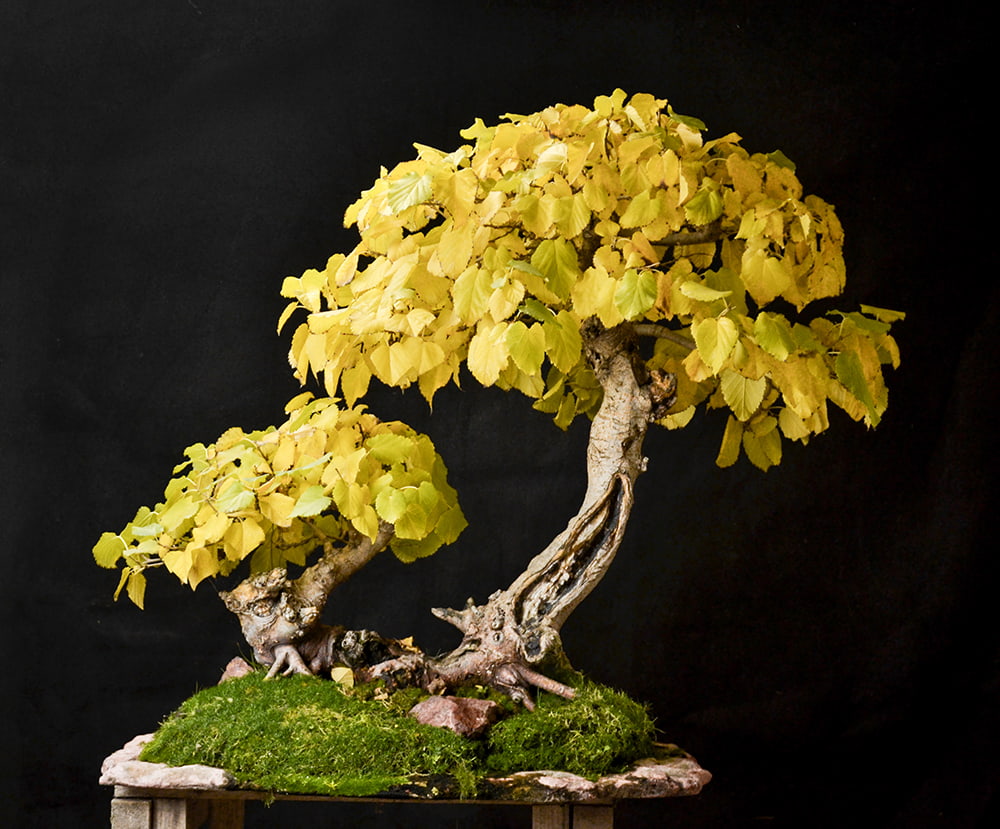When we observe trees growing in nature, we see that those plants, whose age reaches several decades, are particularly beautiful and eye-catching. The goal of creating a bonsai is to give a small seedling the attractiveness and beauty of older trees. However, the actual age of the bonsai doesn’t have special significance. In most cases, age is not given much attention (except for trees with centuries-old history). If the age of a bonsai is indicated, it is merely approximate and assessed based on appearance and external features.
A true bonsai enthusiast aims to create a unique and irreplaceable tree, one that leaves an impression on the viewer, as if it has been growing for decades, and various natural events have left their mark on its development. Creating a bonsai’s “perfect, aged” form is not an easy task. Achieving the desired result requires years of work and often the use of special techniques. These methods allow us to artificially “age” the plant and refine its form. Some of these techniques are quite specific and difficult to execute. Therefore, it is recommended that only individuals with several years of experience attempt the methods described in this section.
Large trunk
The thick trunk of a tree is one of the most important elements in achieving an effective bonsai. Well-developed surface roots and a thick trunk give a small tree the appearance of age. There is a general proportional rule: the height of the bonsai should be a maximum of ten times the diameter of the thickest part of the trunk. For example, if the trunk diameter is 4 cm at the roots, the bonsai's height should be no more than 40 cm. Therefore, at the initial stage of bonsai shaping, it is better to first focus on the development of surface roots and the thick trunk, and then on the formation of the branches.

The trunk of the tree thickens in proportion to the plant's growth. When the plant grows in a small container, the thickening process is slow. If you believe the tree trunk's thickness doesn't match its height, it's better to plant the sapling in open ground for a few years. The unrestricted growth of roots in a larger space causes the plant to develop faster, thickening the trunk. During the free growth period, it's better not to transplant the plant. After a few years, when the trunk has thickened sufficiently, prune the branches, remove it from the ground, trim the roots to the desired size, and plant it in a container.
If you don't have the option to grow the sapling in open ground, use a large container. As long as the roots and branches grow freely, the tree trunk will thicken accordingly. When the roots completely fill the container, the thickening process noticeably slows down.

Also, branches growing near the roots help with thickening the trunk. In the early stages of working on a bonsai, do not prune these branches, even though they do not serve any purpose for the future shape of the bonsai. When you decide that the tree's trunk is thick enough and the seedling is ready to be transferred to a container, only then should you prune them.
The method of growing the plant in open ground or a large container also has a downside: branches grow freely and thicken. After pruning them to the desired size, the bark will cover the cut over the years. This spot never really "disappears" and will always be noticeable on the plant.
This method can be used for both deciduous and coniferous plants. However, it is better to choose varieties that grow quickly and can develop new shoots from dormant buds.
There is another method for thickening the trunk: below the probable surface roots, wrap a thick wire around the seedling and secure it tightly. Then plant it in a container or any large pot.

The place where the wire is wrapped should be covered with soil. After some time, the upper part of the wrapped wire will thicken. After this, carefully remove the soil and unwrap the wire. If you are too late and the wire has embedded itself into the trunk to the point where it cannot be removed, wait for the transplanting season and cut the roots at the spot where the wire is wrapped.
Branch

After several years of pruning, the plant develops a denser and more varied branch system. However, attention must be paid to the number of leaves and second-order branches. It is not necessary for the bonsai to give the impression of being "well-maintained shrubbery." A well-formed plant should show the shape of the trunk and the arrangement of the thicker branches. The canopy may be so dense that only the lower part of the trunk and the surface roots are visible. However, a bonsai looks more effective when there is some free space between the thick, formed branches. This creates the illusion of a more "mature" plant.
It is also worth noting that if the deciduous plant has well-formed second-order branches, it looks just as beautiful in the winter as it does at other times of the year. Deciduous trees have a unique, distinctive beauty.

